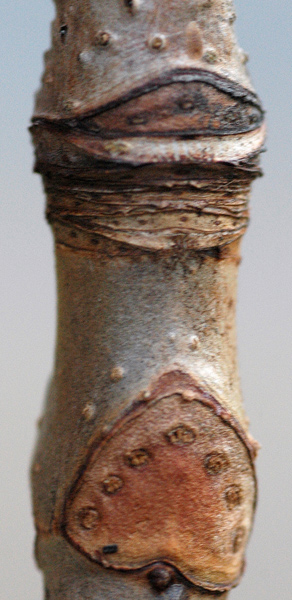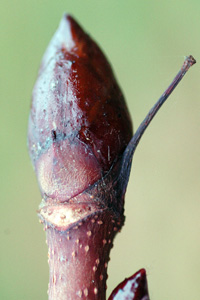Horse Chestnut
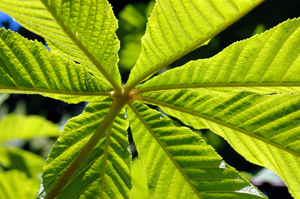
The Horse Chestnut is found naturally in parts of Albania and Greece. In the UK, horse chestnuts have been planted as ornamental trees, particularly in suburban roads for their spectacular ‘candles’ of white or pink flowers.
The Horse Chestnut is also well known amongst school children and the 'young at heart' for part of its fruit - the conker. Each year the Northamptonshire village of Ashton hosts the World Conker Championships in October. The winner of this competition is lead to a conker throne and presented with a crown of conkers!
Sadly, the horse chestnut has been subject to attack by a fungus called Guignardia aesculi or the leaf blotch fungus. Reddish brown patches appear on the leaves (from July onwards), particularly at the tips and edges of the leaflets. A closer look will reveal small black pimples, these are the fruiting bodies of the fungus. Infection may result in some of the leaves falling early, but it does not usually result in significant damage to the tree.
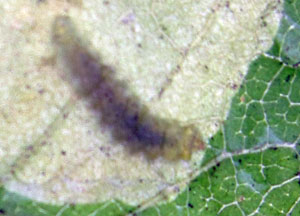
However, infection of the horse chestnut with the caterpillars / larvae of a small moth (Cameraria ohridella) has a much greater impact. These caterpillars feed on the tissue between the upper and lower surfaces of the leaf, essentially the caterpillars ‘mine’ the leaf. They create tunnels throughout the leaf where the tissue has been eaten. The moth can pass through several generations each summer and consequently horse chestnut trees can suffer severe infestations with these caterpillars and the leaves fall prematurely. The tree is basically defoliated. Details can be found in this woodland blog.
Leaf
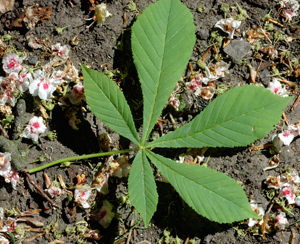
The horse chestnut leaf is a compound leaf, with 5 to 7 leaflets attached to a common point. It is a palmate leaf. The leaf stalk or petiole is long and slightly swollen at the base where it meets with stem. The leaflets are narrow at the base and broaden out towards the tip of the leaf. Each leaflet has a prominent central vein / mid-rib. The margin of the leaf is serrated..
Bark & Stem
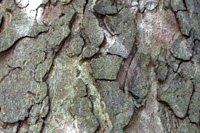
The bark is described as having large, smooth flakes, and may be a greyish-green colour. It has been used it as the basis of a yellow dye. The wood / timber is susceptible to decay, but is used in furniture making, veneers and plywood.
Flowers and Fruits
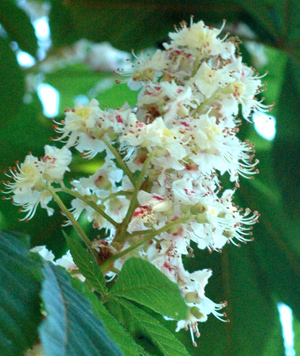
The flowers of horse chestnut are possibly the most obvious of tree flowers. The tree produces many spikes of white to pale pink flowers (often called candles). The flowers (if pollinated) will eventually give rise to the spiked fruits, which contain conkers.
Winter Twigs
The winter buds are arranged along the twigs in pairs and each pair is set at 90° to the previous pair. The twigs often have many leaf scars, which are described as horse shoe shaped - even down to the ‘nail holes’ . The ‘nail holes’ represent where the fibrous xylem (water conducting) tissue entered the leaf. The buds are quite large, and are protected by scale leaves, these have a deep red-brown colour and are sticky. The scale leaves are significant structures and when they fall away, they leave significant scars. It is possible to determine annual growth by looking at the position of these scars along a stem. Raised lenticels (gas exchange pores) can be seem on the stems.
